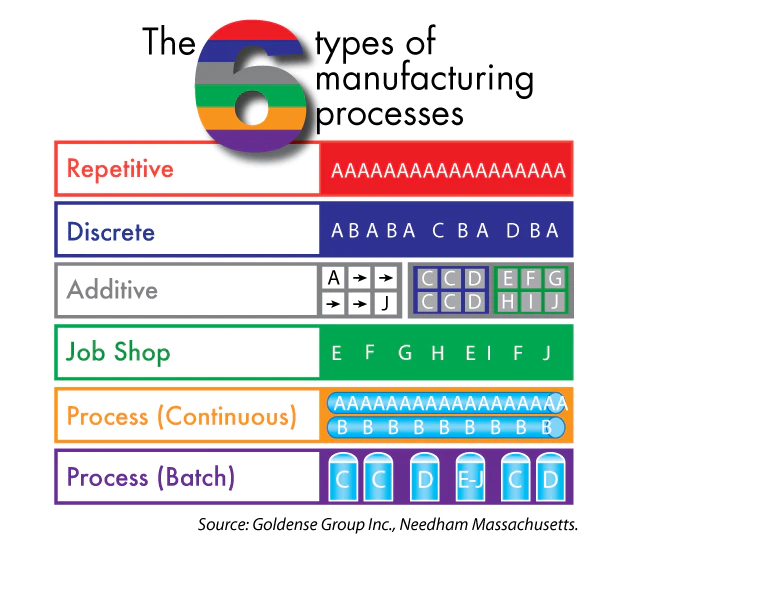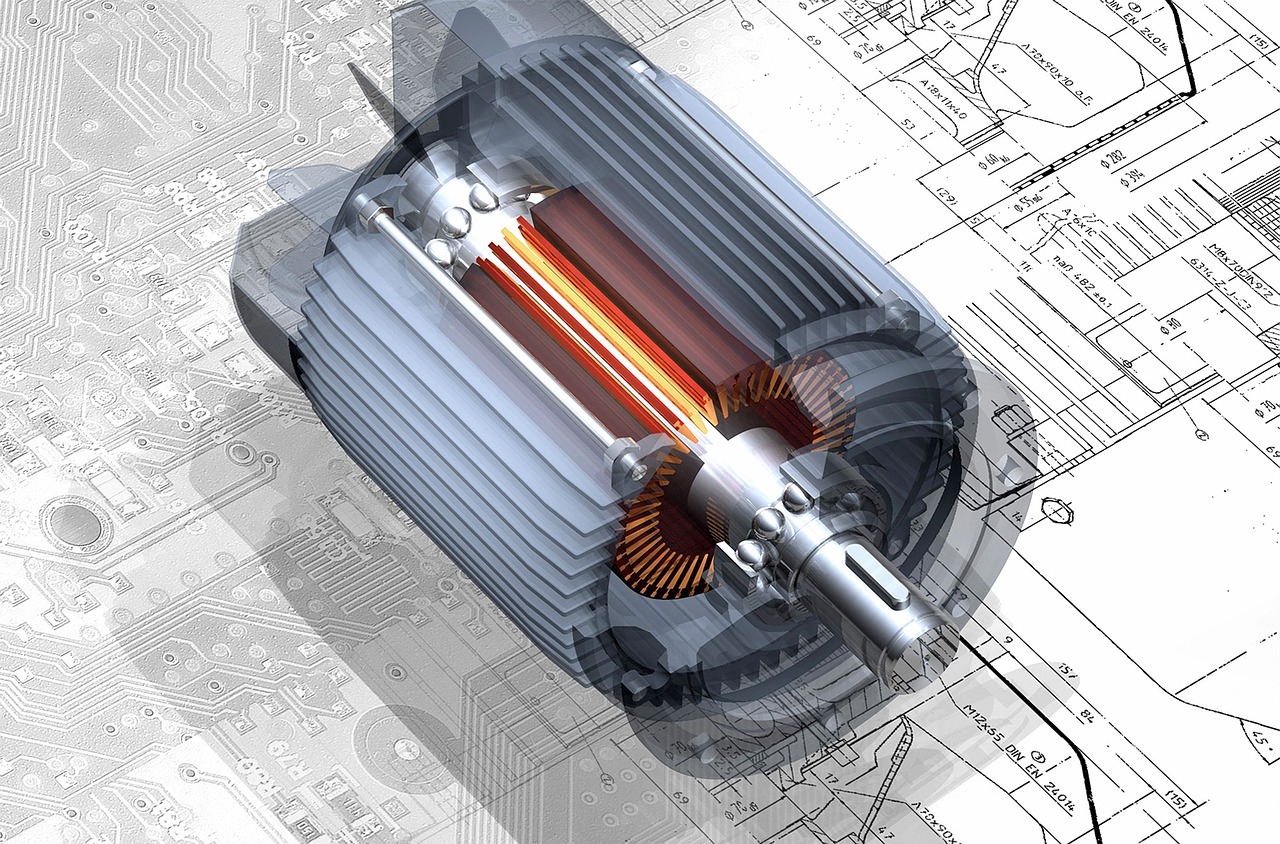As supply chains become increasingly complex, with components sourced globally regardless of where manufacturing takes place, the manufacturing processes used to create goods have developed a variety of permutations and combinations as well.
Until recently, there were five primary manufacturing processes. But the growth of 3D printing increasingly impacts manufacturing and can be considered not only a sixth process in and of itself but also a component of the other five more traditional processes.

Traditional Manufacturing Processes
The five traditional manufacturing processes are:
Repetitive
Dedicated production lines running 24/7/365. They tend to turn out the same or very similar items. That means next to no set-up time once the line is running. It also means it’s possible to control supply and demand by speeding up or slowing down the rate at which the line operates. A second, identical line can be added for peak manufacturing, or a second line operating in discrete mode can compensate during high demand periods.
Discrete
In many ways the most flexible and adaptable manufacturing process before 3D printing came along, discrete process manufacturing runs the gamut from relatively few setups and changeovers to frequent ones. The discrete process can be used for products very similar to those created via repetitive process or a plethora of different products. While useful, there’s a lot of set-up and tear down time involved in discrete process manufacturing, especially when the products are quite different from each other.
Job Shop
Described as “the ultimate case of Discrete,” the job shop manufacturing process is labor-intensive and often involves manual assembly. Component parts need to be highly cost-effective when this process is used to compensate for intermittent production that is only lightly automated compared with continuous process manufacturing.
Process (continuous)
Similar in many ways to repetitive process, continuous process manufacturing happens 24/7/365 as well. Production materials are different, however: gases, liquids, powders, slurries, granular or chunky materials.
Process (batch)
Batch process manufacturing can resemble either discrete or job shop. A single batch can sometimes meet demand. If not, several batches are produced, the equipment is cleaned, and a different product is created next. Batch process manufacturing can also be continuous in nature when standardization of raw materials is an issue and each batch needs to be analyzed and the original formulation tweaked to meet specifications. Think pie crust: the amount of water added to the flour and fat of a pie crust varies depending on how humid or dry the day is.
3D: The Disruptive Manufacturing Process
Of these, job shop and the two process manufacturing categories are the ones that will be most dramatically impacted by 3D printing.
A form of additive manufacturing, 3D printing is cheap, infinitely adaptable, and often environmentally friendly. By 2014, $2.2 billion was spent on 3D printing, and 28.3% of that money was used to make end-use parts rather than prototypes, representing exponential growth from only 4% end-use parts a decade earlier, according to Wohlers Associates.
By transforming three-dimensional objects into many thin layers laid on top of each other one after the other, 3D printers are able to recreate the original object from different materials. It’s considered additive manufacturing because of the successive layers, with no trimming, cutting, or hollowing out of materials. This, of course, means there is really no waste at all involved in the 3D printing manufacturing process.
While cost-effective in materials terms, however, 3D printing is unlikely to have a lot of impact on continuous process manufacturing. It’s just not fast enough to be cost effective. To date, the most disruptive effect of 3D printing has been the ability to create prototypes on the fly and to quickly and cheaply test and modify them before final product creation.
The 3D manufacturing process is having a huge impact on discrete manufacturing though. When volumes required are low (for custom orders), the amount of time and effort required to tear down lines and change them over to run other products is an issue 3D printing solves without even trying, really. And as 3D printing gets faster and faster, a switchover from discrete to 3D is inevitable, since it also eliminates the non-conforming product runs after changeovers while ensuring quality specifications are met.
As the lowest volume, least automated manufacturing process requiring the most highly skilled human labor, 3D printing will eventually replace job shop manufacturing entirely. The 3D process has already demonstrated its versatility. Whether used to manufacture human organs or aircraft parts, 3D printing is no longer in its infancy. But it’s definitely about to graduate high school and head to college.


1 comment
Thanks for sharing such information. The types of manufacturing process included here are quite informative. Please keep on posting such valuable content.